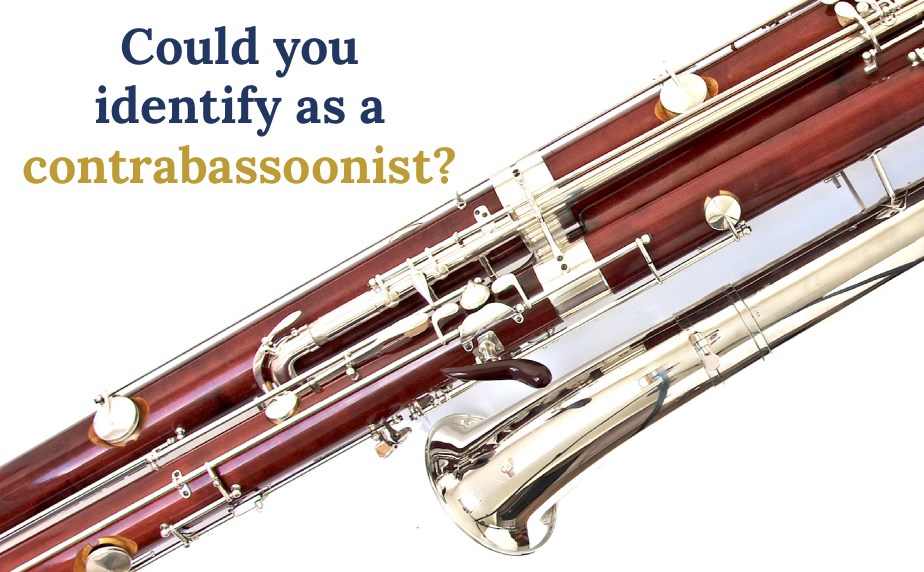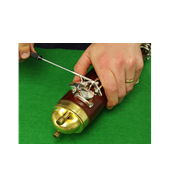Beyond Bassoon: Could You Identify as a Contrabassoonist?
September 19th, 2025

One of our most-read pieces was “Do you identify as a bassoonist?”. This time we’re going deeper—literally. Could you see yourself not just as a bassoonist, but as a contrabassoonist as well?
The Contrabassoonist Mindset
Choosing contrabassoon takes a certain single-mindedness. You’re inviting into your life an instrument that can be awkward to carry and never inconspicuous. Perhaps only the harpist or double bassist may understand the logistics quite as well.
It also asks for an independent streak: a willingness to stand out (sometimes quite literally with taller instruments), to embrace the “What is that?” comments, and to play because you love it, not because it blends into the crowd.
Most of all, it requires a love of the low register. Many bassoonists are happiest at the bottom of the stave; if that’s you, contrabassoon offers a richness and rumble beyond what the bassoon can produce. It’s addictive in the best way. You’ll be working at the very floor of the orchestra, even down to the piano’s lowest notes—only the pipe organ typically goes lower (often to around 16 Hz), while a B♭ contrabassoon bottoms out near 29 Hz.
If any of that resonates, you may already be a contrabassoonist at heart—or at least a “nearly there” one.
Why It’s Worth the Leap
The glorious sound would be reason enough, but there are practical benefits too. contrabassoonists are rare, which means you’re almost always in demand. While it may be a stretch to make contrabassoon your full-time instrument, doubling with bassoon is a superb and highly employable combination.
The learning curve is friendlier than many expect. If you can play bassoon, you can learn contrabassoon: fingering and technique are largely familiar, just sounding an octave lower. There are a few new quirks to absorb, especially in the highest octave, but competent bassoonists tend to pick them up quickly.
There’s also a financial upside. Contrabassoons are robustly built, used less intensively than bassoons, and hold their value well. Once you’ve climbed the initial cost hill, ownership can be surprisingly economical over time, and resale is typically kind.
What Living With One Really Looks Like
Contrabassoons usually descend to low B♭, with some instruments reaching low A or going to low C only. Modern designs are mostly compact, which keeps them more wieldy.
Most contrabassoons don’t separate for transport—the size you see is the size you carry—so case choice matters. The Kronwalt contrabassoon is an exception, with a split in the middle to use with a compact case, but that is still a very rare instrument in the market. The instrument itself is notably heavier than a bassoon, and traditional wooden cases make this worse; that’s why regular players often prefer a well-padded gig bag with back straps, which makes it much more manageable. Pre-war, thin walled instruments can be incredibly lightweight to carry though, with a vibrant sound, so they are worth looking out for and we get them from time to time for sale.
As for cars: compact models fit in virtually anything; low A models fit in most, but not all. Crooks (bocals) are simply larger siblings of what you know—typically in 1, 2, and 3 lengths—and reeds are bigger too but familiar in feel and function – a looser embouchure is generally required.
Thanks to stout construction and lighter usage patterns, older contrabassoons are often remarkably well preserved. Don’t be put off by age alone: condition and playability trump age, and many pre-war or older instruments remain fantastic propositions.
Our Passion for Contrabassoons
Contrabassoons aren’t just something we know about — they are something we specialise in. Large numbers come through our workshop each year for repairs, overhauls, servicing, upgrades and full restorations, and we thoroughly enjoy working on them.
We are an unusual company in that we have developed specialist, contrabassoon-specific tools and techniques over many years, giving us the rare ability to work on these complex instruments to a very high standard.
Our work regularly travels far and wide — contrabassoons from our workshop go all over the world. We work closely with a specialist shipping company to ensure that contrabassoons are packed, handled and transported safely and securely, wherever they are headed.
If you are looking for expert contrabassoon repair work, or are thinking about buying or selling a contrabassoon, we warmly welcome you to get in touch — we love working on these extraordinary instruments.
So… Could You Identify as a Contrabassoonist?
If you’re mentally there—or almost there—but unsure about the practicalities, we’re happy to help. We can talk through instrument choices (compact vs standard), cases and transport, crooks and reeds, and what to look for on the second-hand market.
And when you’re ready, we can set up, optimise, and service your contrabassoon so you get that unmistakable depth with comfort and reliability.
Thinking about it? Get in touch. We’ll help you decide whether contrabassoon is your next great musical move—and make the transition smooth when you’re ready.
News and guides








